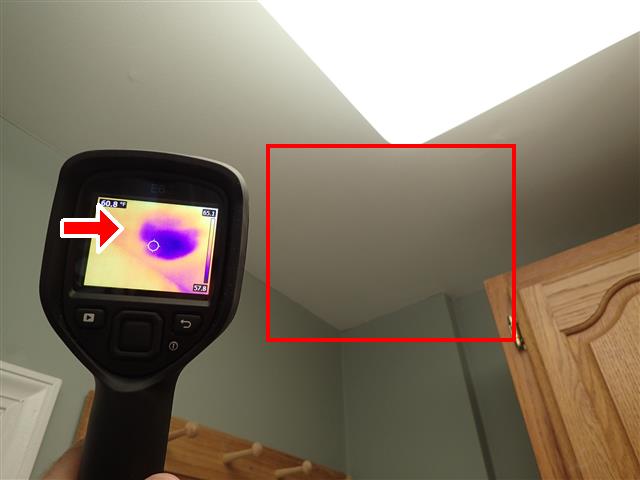


A service that equips our inspectors with powerful technology to take your inspection a step further
* Example 3 (above) – while it is possible to identify hazardous electrical conditions, the inspector does not scan the inside of the electrical panel with the infrared camera as a part of the Leak Detection service. Scanning the inside of the electrical panel using an infrared camera would only happen in circumstances where the inspector deems it helpful during the inspection of the electrical panel, and if he/she has such a equipment on hand. The purpose of the Example 3 photos above is primarily to show the ability of infrared technology to observe thermal anomalies invisible to the naked eye.
How IR Technology Can Help To Detect Leaks During a Home Inspection
catch hidden leaks
- Detect leaks not otherwise visible to the naked eye (e.g. in the case of slow or recent leaks)
- Gain a clearer picture of the extent of visible leaks (sometimes what was thought to be a small leak is revealed to be more extensive)
- Have greater peace of mind if you are especially concerned about potential indoor-air quality issues
infrared technology
how we do it
As a stand-alone service, the inspector will first run all plumbing fixtures (filling up tubs if applicable). After this the inspector will begin on the top floor of the home, scanning every room of the home from top to bottom with a powerful infrared camera, and using a moisture meter to confirm presence of moisture as needed. Any active water or air leaks will be documented, with pictures included in your report.
As an add-on to a full home inspection, the inspector will perform the Leak Detection portion (as described above) at the very end, since at that point the plumbing system will have been fully tested. Rather than having a separate report for this service, the inspector will include any findings in the main home inspection report.
Lastly, when requesting Leak Detection as an add-on service to a full home inspection, the service is discounted!
To Know More, check out some related Blog posts:

Leak Detection: How Infrared Technology Can Help Find Hidden Leaks
Concerned about hidden leaks in your current or future home? We HIGHLY recommend an add-on service to your standard home inspection which we call “Leak Detection”. Here we address some common questions regarding the technology behind this service. At the end we’ll also mention when it may NOT be worth it to include this add-on service.
